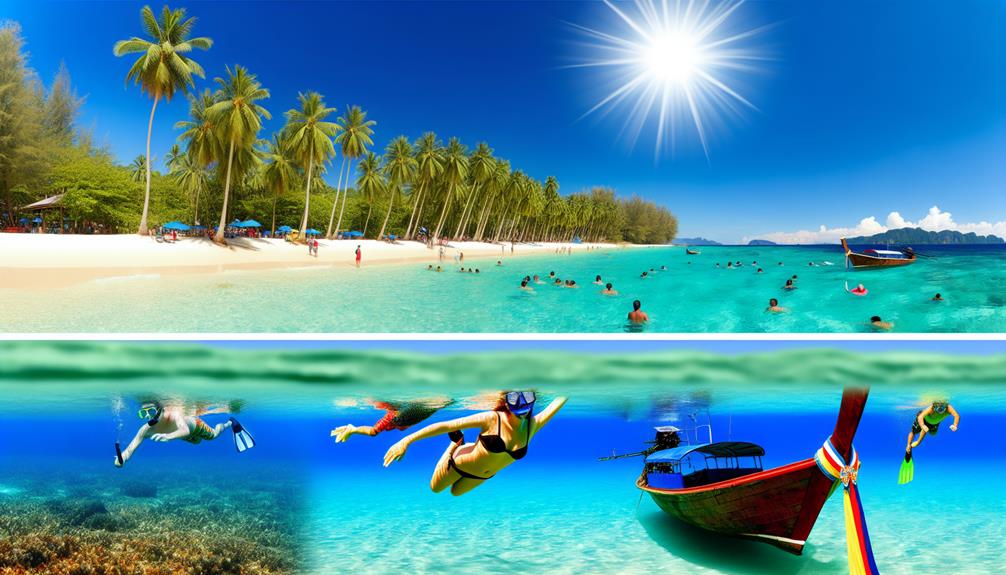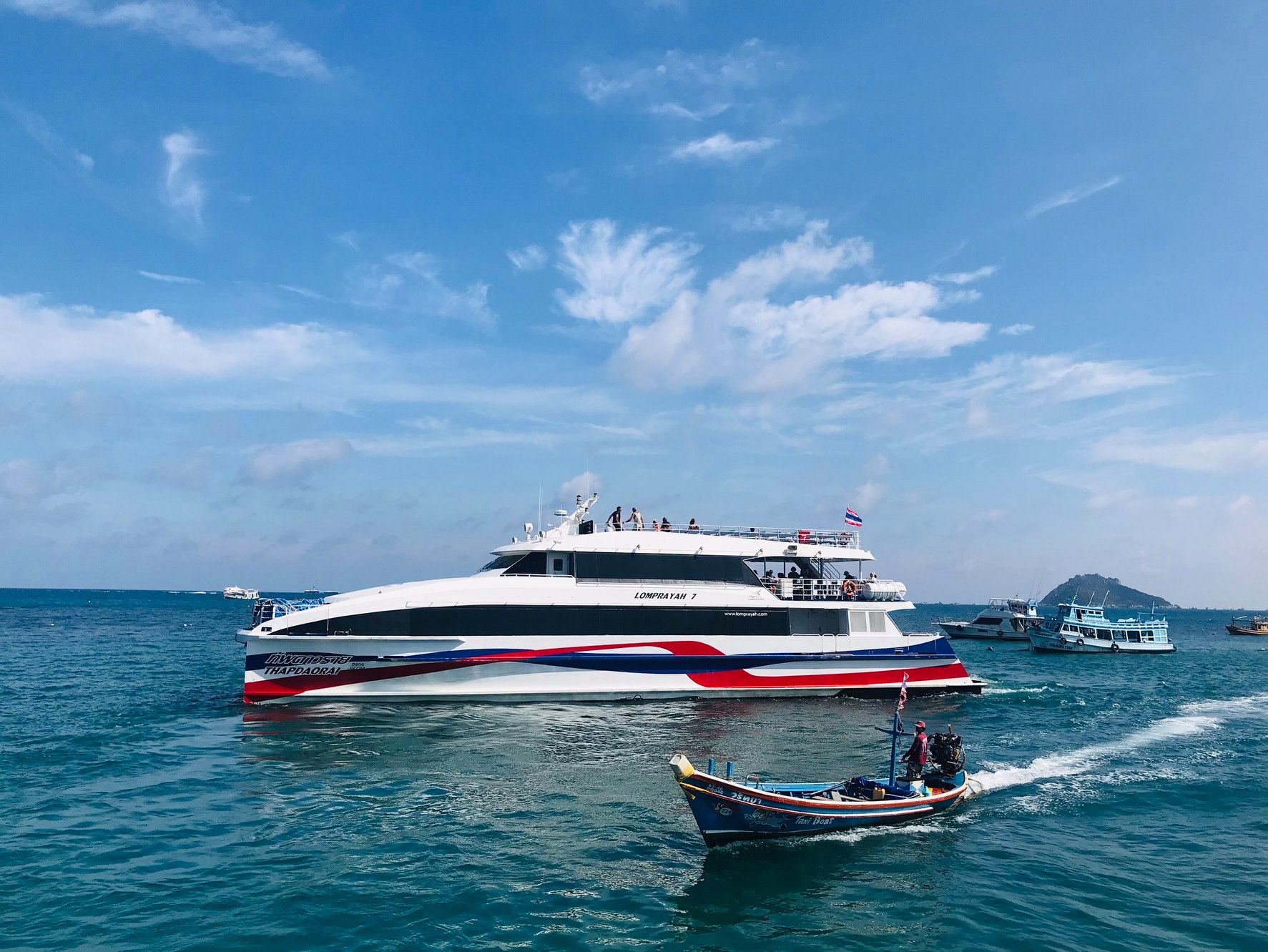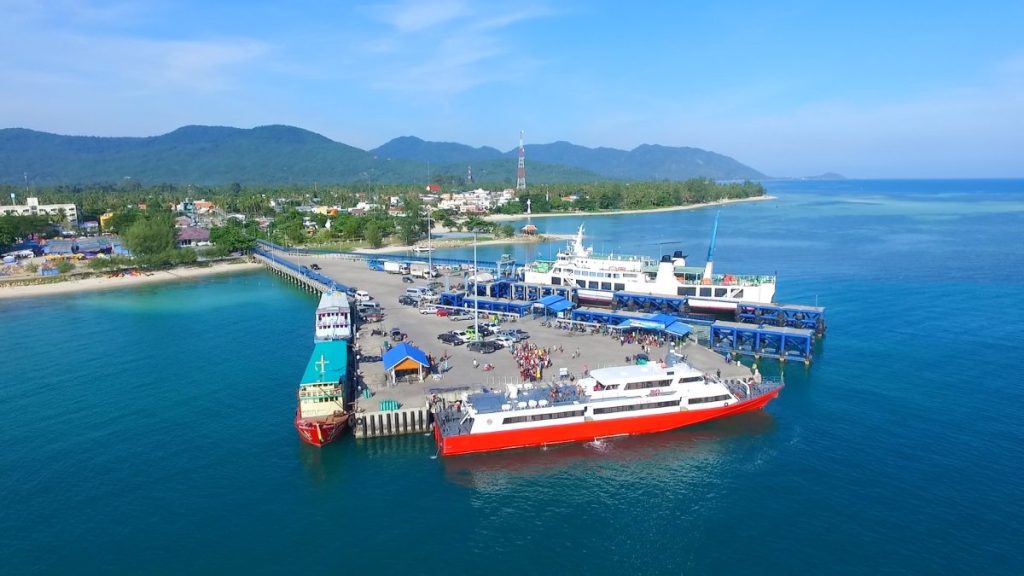As you plan your journey, pack your bags, and dream of the pristine beaches of Thai islands, it’s crucial to temper your expectations with the reality of summer weather patterns.
The monsoon season, with its temperamental downpours and radiant sunbreaks, shapes the archipelago’s climate from June to October. You’ll experience the warmth of average temperatures hovering around the high twenties to thirties in Celsius, but it’s the rainfall that often catches visitors off guard—both in its sudden onset and its refreshing aftermath.
Each island whispers its own meteorological secrets, and understanding these nuances can be the difference between a holiday spent in blissful sun-soaked adventure and one that’s a lesson in tropical unpredictability.
Join us as we explore the subtle shifts of the summer skies that could shape your island escapade in ways you might not yet imagine.
Understanding the Monsoon Season

Navigating the monsoon season is key to enjoying Thailand’s islands, as it transforms the landscape with heavy rains and dynamic weather patterns. You’ll find that the monsoon, typically spanning from May to October, dictates not just the climate but also the rhythm of life on the islands. During this period, you’re likely to encounter short, intense downpours followed by sunshine. It’s a time when nature bursts into life, with lush greenery and full waterfalls.
You’ve got to plan accordingly, though. Sea conditions can be rough, and some boat services may be less reliable or even suspended, especially during the peak of the monsoon in July and August. Don’t let this deter you; instead, use it as an opportunity to explore the islands differently. Embrace indoor activities or enjoy the dramatic beauty of the storms from a safe shelter.
Pack wisely, bringing waterproof gear and bags to protect your belongings. Also, it’s a good idea to check the weather forecast regularly and stay flexible with your travel plans. Remember, the monsoon season also means fewer tourists and lower prices, so you can enjoy the islands’ charm without the crowds. Just be aware of the local weather patterns, and you’ll have a memorable experience.
Average Temperature Ranges
When planning your visit to Thailand’s islands, it’s crucial to consider that average temperature ranges from about 23°C (73°F) at night to 30°C (86°F) during the day. These temperatures can create a blissful balance for beachgoers and adventurers alike, allowing for sunbathing and exploration without the discomfort of extreme heat.
During the summer months, you’ll find that the heat is consistent, with little variation between daytime and nighttime temperatures. This steady climate means you can pack light, focusing on breathable fabrics and sun protection. You won’t need heavy clothing, but do bring a light jacket or sweater for breezy evenings or boat rides.
Remember, humidity levels are also high, hovering around 75-90%. This can make the air feel warmer than it actually is, so staying hydrated and taking breaks in the shade or indoors will help you stay comfortable. If you’re not used to tropical climates, you might find the heat more intense than what the thermometer reads.
As you plan your activities, consider the heat. Schedule strenuous activities like hiking or cycling for the cooler morning hours. By understanding the average temperature ranges, you’ll be better equipped to enjoy the stunning beauty of Thailand’s islands while keeping cool and comfortable.
Rainfall Patterns and Intensity
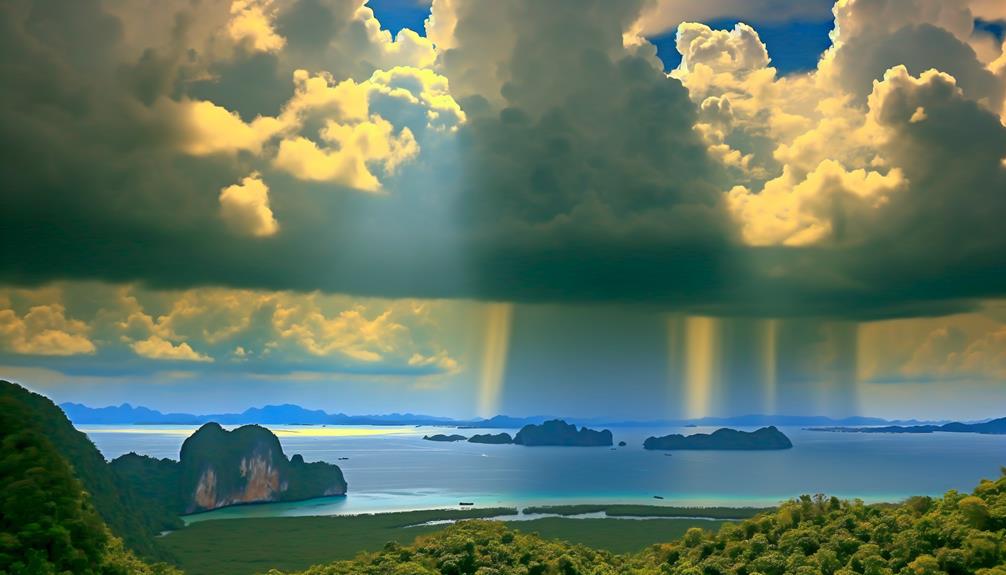
Understanding the rainfall patterns on Thailand’s islands is essential, as the intensity of rain can vary significantly throughout the summer season. When you’re planning your trip, knowing what to expect will help you pack appropriately and schedule your activities to make the most of your vacation.
Typically, the summer months on the Thai islands, from June to October, are part of the monsoon season. You’ll find that rain is more frequent and can be quite heavy at times. However, it’s not all day downpours; the rain often comes in quick, intense bursts, usually in the late afternoon or evening. This means you can still enjoy sunny beach mornings and early afternoons.
You should be prepared for sudden showers, so it’s smart to have an umbrella or a raincoat handy. Despite the rain, the temperatures remain warm, which makes those occasional wet spells refreshing rather than chilly.
Even with the rainfall, the islands’ lush landscapes thrive, and the rainforests become even more vibrant. The waterfalls are particularly spectacular during this time, so don’t miss out on visiting them. Just remember to tread carefully, as paths may be slippery.
In short, expect warm weather with periodic rainfall. Embrace the rain when it comes and enjoy the island’s natural beauty in its most nourished state.
Island-Specific Weather Variations
Each Thai island boasts its own unique weather quirks that can affect your travel plans. For example, while Phuket might be basking in sunshine, Koh Samui could be experiencing brief tropical showers. It’s essential to consider these variations when you’re deciding where to go.
Phuket, on the Andaman Sea, generally sees less rain than the Gulf of Thailand islands such as Koh Samui, Koh Phangan, and Koh Tao during the summer. The west coast of these islands can be particularly wet, whereas the east coast often remains drier. If you’re into diving or snorkeling, keep in mind that visibility can vary dramatically between islands, and even from one beach to another on the same island, due to these weather disparities.
Koh Chang and its neighboring islands, closer to Cambodia, have their own microclimate, which usually results in more rainfall in the summer months. But don’t let that dampen your spirits – the rainforest there thrives in these conditions, offering lush, green landscapes that are especially beautiful this time of year.
In contrast, the smaller, less developed islands like Koh Lipe may see extended periods of sunshine, interrupted by only occasional showers, giving you more beach time. So, before you pack your bags, check the specific forecast for your island destination to make the most out of your Thai summer getaway.
Preparing for Summer Climates
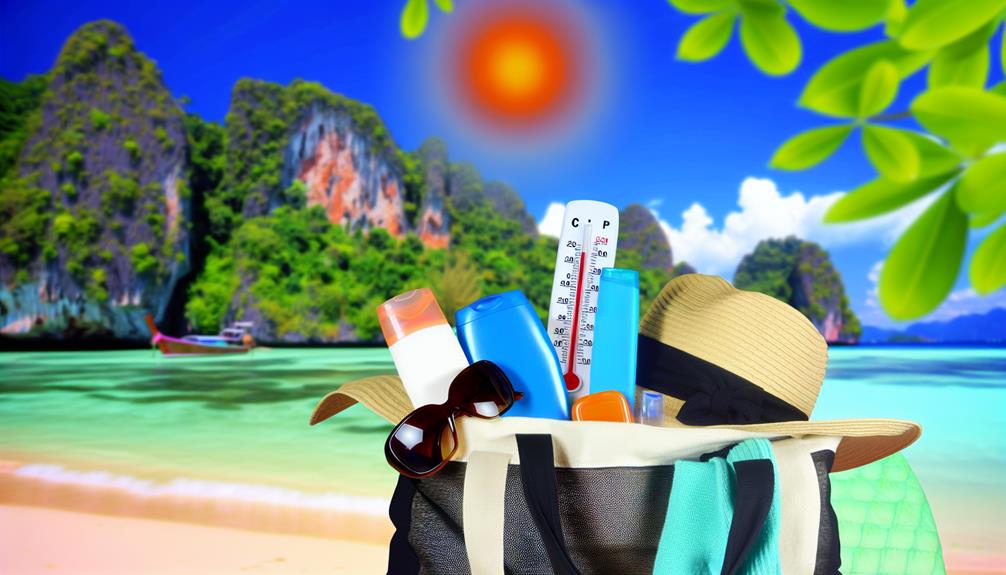
Armed with knowledge of the islands’ unique weather patterns, you’ll want to pack accordingly for the varied summer climates you may encounter in Thailand. Expect warm, humid days where lightweight, breathable clothing is your best friend. Opt for materials like cotton or linen that help wick away moisture and keep you cool under the tropical sun. Don’t forget a wide-brimmed hat and high-SPF sunscreen to protect against the sun’s strong rays.
As the evenings can sometimes bring a refreshing breeze, consider bringing a light sweater or shawl. You’ll be glad you have it when dining alfresco or taking a sunset stroll along the beach. Moreover, sudden rain showers are common, so a compact, quick-dry rain jacket or a portable umbrella is essential to stay comfortable during unexpected downpours.
Lastly, comfortable footwear that can handle both sandy shores and occasional rain is crucial. Waterproof sandals or flip-flops are practical choices for beach days, while a pair of water-resistant walking shoes is suitable for exploring the islands’ diverse landscapes.
Frequently Asked Questions
How Does the Summer Weather on Thai Islands Affect Local Wildlife and Marine Life?
You’ll find that local wildlife and marine life adapt to seasonal changes, often becoming more active or seeking shelter to cope with varying temperatures and weather conditions.
What Unique Cultural Events or Festivals Take Place on Thai Islands During the Summer Months?
During summer, you’ll find Thai islands bustling with festivals like the vibrant Phi Ta Khon and the Queen’s Birthday, offering a glimpse into Thailand’s rich traditions and celebratory spirit. Don’t miss out!
Are There Any Specific Health Advisories or Common Illnesses Tourists Should Be Aware of During Summer in Thailand?
You should be mindful of heatstroke and dehydration. Also, protect yourself from mosquito-borne diseases like dengue fever by wearing repellent and staying in well-screened rooms, especially during the rainy season.
How Does Summer Tourism Impact the Sustainability and Environmental Conservation Efforts on Thai Islands?
You’ll find that summer tourism strains local ecosystems, challenging conservation efforts as increased waste and foot traffic threaten the natural beauty of Thai islands you’re keen on preserving.
Can You Recommend Any Off-The-Beaten-Path Destinations on Thai Islands That Are Particularly Enjoyable During the Summer Season?
You’ll love Koh Lanta for its serene beaches, or Koh Yao Noi for authentic local culture. Both offer unique experiences away from the typical tourist trails, especially during the summer season.
Conclusion
As you gear up for your island retreat in Thailand, remember that summer brings a mix of warmth and wetness. Expect balmy days with a chance of monsoon showers.
Each island has its quirks, so pack for sudden downpours and sun-drenched adventures alike. Embrace the tropical rhythm, and you’ll find the island’s summer climate an exhilarating part of your journey.
Stay flexible, stay dry, and soak up the unique beauty that Thai summers have to offer.

